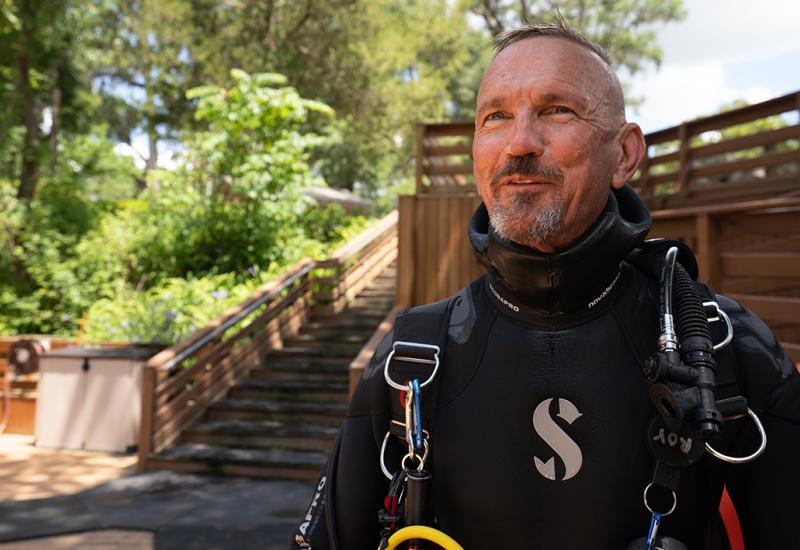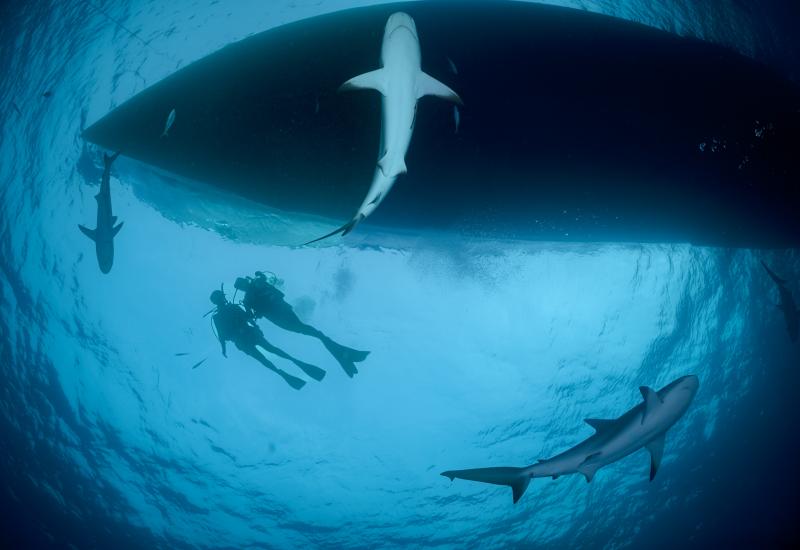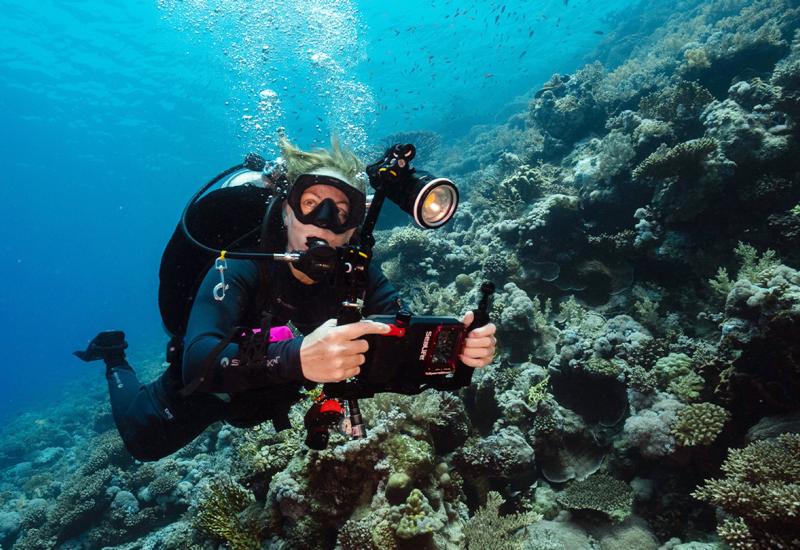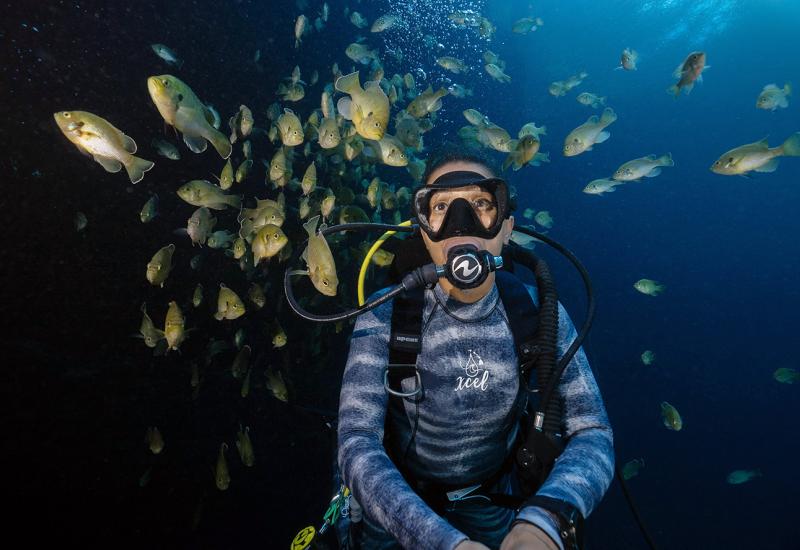How the BARE Guardian Tech Dry Drysuit Performed in My Intro to Cave Class
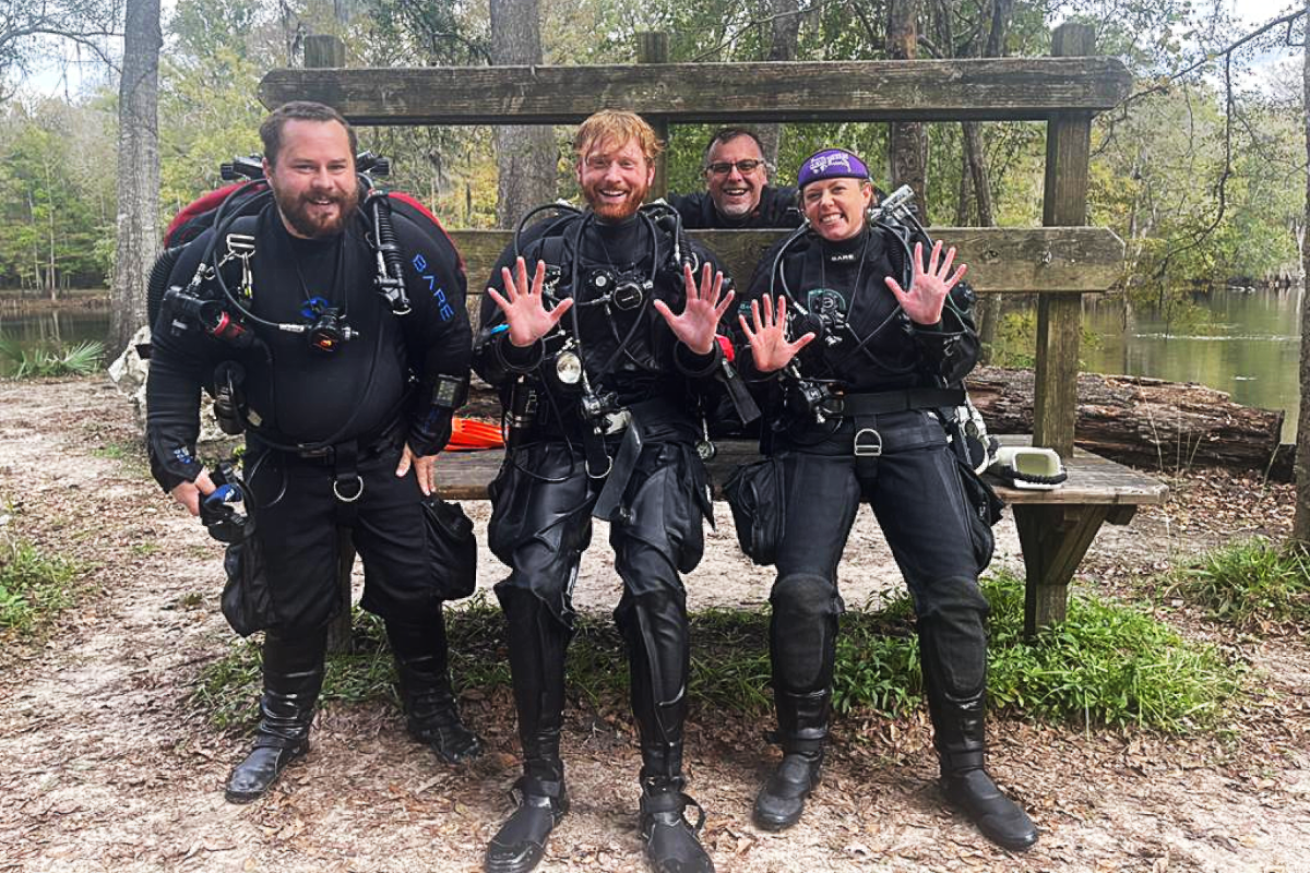
Candice LandauKen Sallot’s November ‘22 Intro to Cave class posing for a photo on their last dive, “Ginnie fingers,” on full display. Clockwise from back to front: Ken Sallot, Candice Landau, Keenan Dillard and Cameron Mahaffey.
In 2017 I met Gilly Elor, a physicist, rebreather diver and dedicated caver. As our friendship developed over the course of long dives in Oregon’s murky Woahink Lake, blueberry ciders and “proper” tea, I came to know of a world that had previously been all but mythical to me: cave diving and extreme exploration.
While Gilly’s expeditions always fascinated and intrigued me, I never once imagined I’d have the chutzpah to enter a cave on SCUBA. When I moved to Florida in 2022, my interest in caverns and caves hit a tipping point. Each time I tested dive gear in Central Florida’s springs with ScubaLab, I’d peer into crevices guarded by the grim reaper and find myself wondering: what does it feel like to explore these dark, little-frequented tunnels? What do I need to know to enter and return safely?

Candice LandauThe author posing next to a map of the cavern system at Blue Grotto in Florida.
Though Gilly had put me in touch with a cave instructor shortly before my cross-country move, it wasn’t until the ScubaLab stars aligned and landed me a cave-ready drysuit that I decided I had what I needed to scratch the itch.
As you might suspect, like technical diving, cave diving is not forgiving of errors. By the time you take this course, you should own equipment you can trust, be very comfortable in the water, have a healthy dose of paranoia, and be competent using and troubleshooting your equipment.
As part of my review of the BARE Guardian Tech Dry drysuit, I’m going to dip in and out of my experience wearing this suit while taking Intro to Cave with Ken Sallot, giving you a real-world view of how I tested it.
First Impressions of the Bare Guardian Tech Dry Drysuit
To give a drysuit a fair test, it is imperative that it fits the diver. In this case, BARE provided me with a made-to-measure drysuit, and I used my own thermals, coincidentally also made by BARE, the SB Mid Layer Full and the Super Hi-Loft Polarwear Extreme.
The drysuit came in a drysuit bag and included a drysuit inflator hose with a quick disconnect and a small ziplock bag with zipper lubricant and drysuit care instructions.
While I’m not a newcomer to BARE drysuits (I dived one for years when I lived in Oregon), some new-to-me features on the Guardian Tech Dry stood out.
Firstly, the two thigh pockets. As any scuba diving instructor or technical diver can attest, pockets are invaluable. You can use them to store wet notes, a backup mask, an SMB, reels, backup flashlights or any other number of things. What most impressed me, however, was that these pockets weren’t just expandable, they also came with bonus zipper pockets on the outside of the main compartment. The main compartments included D-rings and bungees to make it easy to attach and sort through equipment without losing it, and the small zipper pockets served as an extra space for odds and ends—perhaps a backup cave cookie or line arrow?
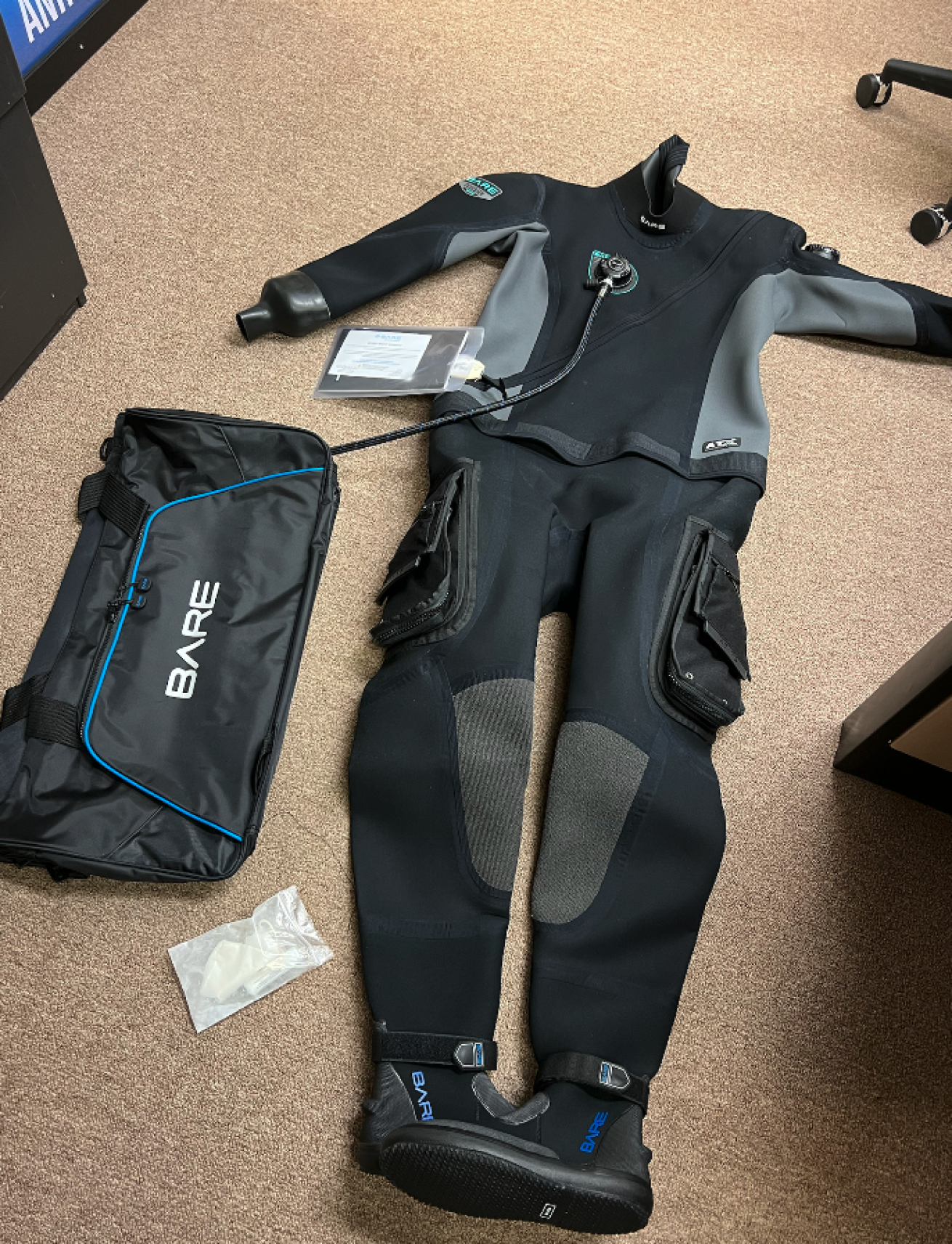
Candice LandauUnpacking the drysuit in the Scuba Diving magazine office.
After the pockets, my eye was drawn to the velcro strap just above the built-in tech boots, a clever feature allowing a diver to decide how much air they want to enter their boots when diving. Especially for newer drysuit divers, allowing too much air to enter the legs and, consequently, the boot can lead to a runaway ascent. Many divers compensate for this by wearing ankle weights or by diving heavier fins, both tactics that can throw trim and buoyancy off. BARE’s solution for the Guardian Tech Dry is clean and simple. Give divers a way to keep air out of their boots.
Another stand-out feature was the plastic front zipper and the built-in adjustable suspenders, making it easy to wear, don and doff the drysuit. A front zipper also allows for self reliance versus the back zipper that requires a buddy.
To keep things simple, I opted for neck and wrist seals I was familiar with—a neoprene neck seal for extra warmth and latex wrist seals (less likely to tear). Both of these options can be customized if you prefer diving silicone wrist and neck seals. I did not bother to add a drysuit glove system as the water in Florida’s High Springs area is warm enough to go without.
Donning and Doffing the Bare Guardian Tech Dry Drysuit
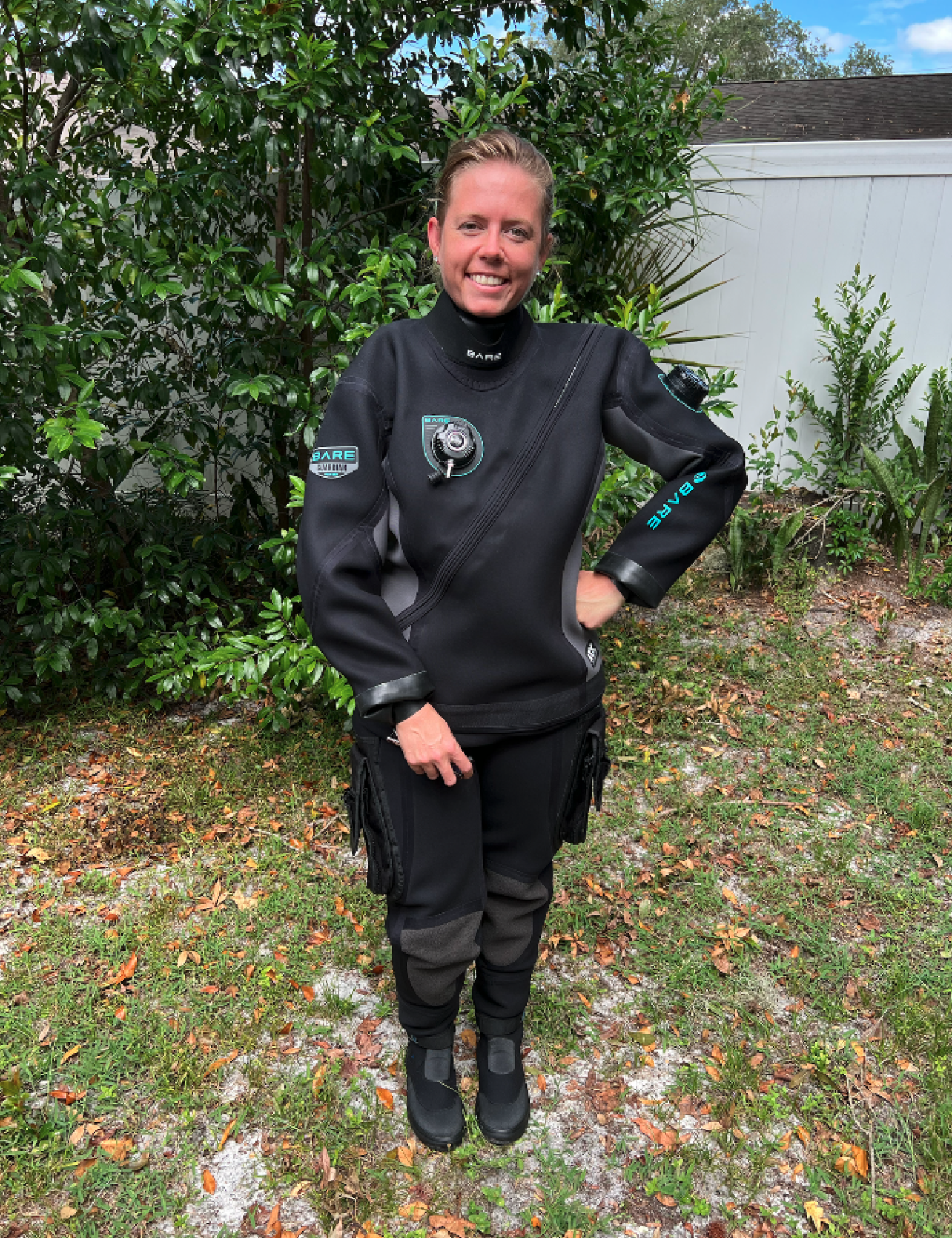
Candice LandauThe author looking a little red in the face as the neck and wrist seals had not yet been stretched. Make sure to do this before your dive, as not doing so can be dangerous.
Before you attempt to dive this drysuit, make sure you try it on at least a few days before your dive. You’ll need to determine if the wrist and neck seals need to be cut or stretched. If you have to do this yourself, be extra careful as you can’t undo going too far. I highly recommend taking it to your local dive shop for help.
I got lucky and, fortunately, only had to stretch my seals. I used soda cans on the wrist seals and a scuba tank for the neck seal. It took a few days for the stretch to take.
Once satisfied with the adjustments, I slipped back into the drysuit, fitted the suspenders appropriately and ensured the front zipper was functioning smoothly. Fortunately, with my own thermals, everything fit perfectly.
I was ready to go!
The Test Dive (Not in a Cave Because That Would Be Dangerous)
To prep for my Intro to Cave class with Ken, I had to familiarize myself with the new drysuit and get so comfortable in it that I could wear it as a second skin, concentrating instead on the new skills I was to learn, instead of on my new equipment.
My first dive on the Guardian Tech Dry took place at Blue Grotto, a dive site I knew well and that had an easy entry and exit point.
I braced myself as I entered the water, readying for a leak. Leaky drysuits are not to be expected out the gate, but in this case, my trepidation had more to do with the fact that my own drysuit had, after hundreds of dives, become incredibly unreliable, leaking at the drop of a hat. No amount of repairs seemed to stop its degradation either. Thus, I was pleasantly surprised when I stayed dry in this new suit.
Finning around the small basin at Blue Grotto, I put the suit’s features to the test. I opened and closed the thigh pockets, I clipped items on and off the D-rings, and I fiddled with the velcro ankle straps, experimenting with ease of adjustment mid-dive. By the end of the dive the suit had made a good impression. Adjusting the ankle straps was easy. The drysuit fitted well and didn’t leak, the suspenders kept it in place, and the pockets were easy to use.
That night I dismantled the suit. I waxed the zipper as per the suit’s instructions, and I hung it to dry. The question now was, how would it hold up in a cave with double steel tanks?
Into the Dark (and Now We Enter the Underworld)
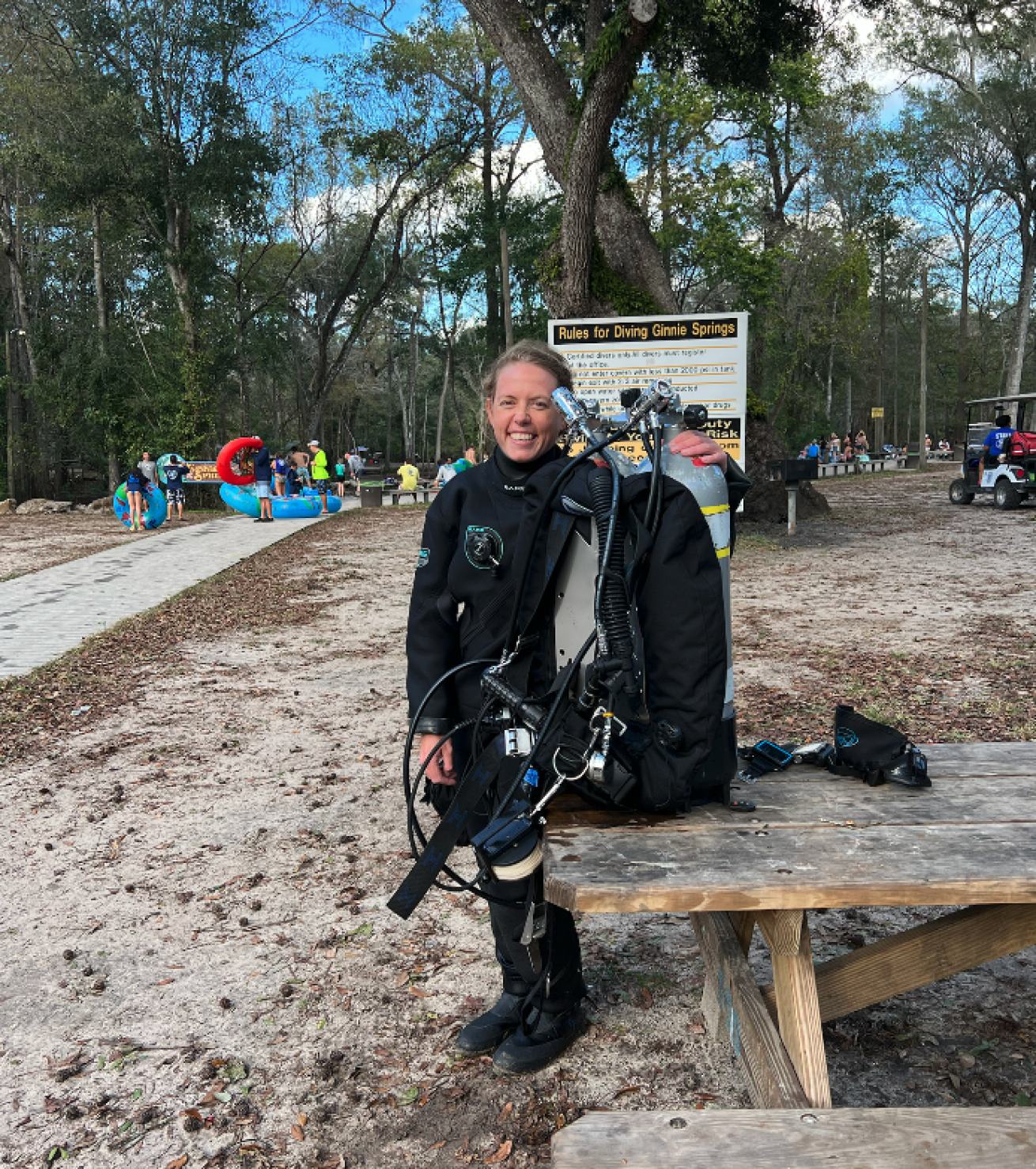
Keenan DillardThe author posing at Ginnie Springs after completing her first cavern dives with Ken Sallot. Obviously, she doesn’t look at all happy.
The first day of my Intro to Cave course focused on theory and land drills. The second covered cavern diving, and the third and fourth days on cave diving. Initially, I thought little of the dry suit. My focus was on practicing skills: running a reel, performing valve drills and getting comfortable existing in an overhead space—the Ballroom at Ginnie Springs.
When I remembered I was supposed to be making notes on the drysuit, I was pleasantly surprised to realize I was so comfortable in it that I’d barely noticed it.
After my first cave dive at Devil’s Ear Spring, I was reminded of why I appreciated BARE’s drysuits over so many other brands: the material. In the case of the Guardian Tech Dry’s high-density compressed neoprene, even scraping up against rough limestone rocks, I didn’t have to worry about opening a hole in the suit.
If you’ve never seen or heard of Devil’s Ear, all you need to know is that it is a high-flow spring (and cave entrance), which, coupled with nearby Devil’s Eye and Little Devil gushes nearly 80 million gallons of water a day. For someone just learning to cave dive, fighting your way into a cave through intense flow (current) can feel insane. It’s how you get “Ginnie Fingers,” the right of passage for any newbie cave diver, but it’s also an introduction to one of the many hazards associated with caves, outside of the overhead environment of course.
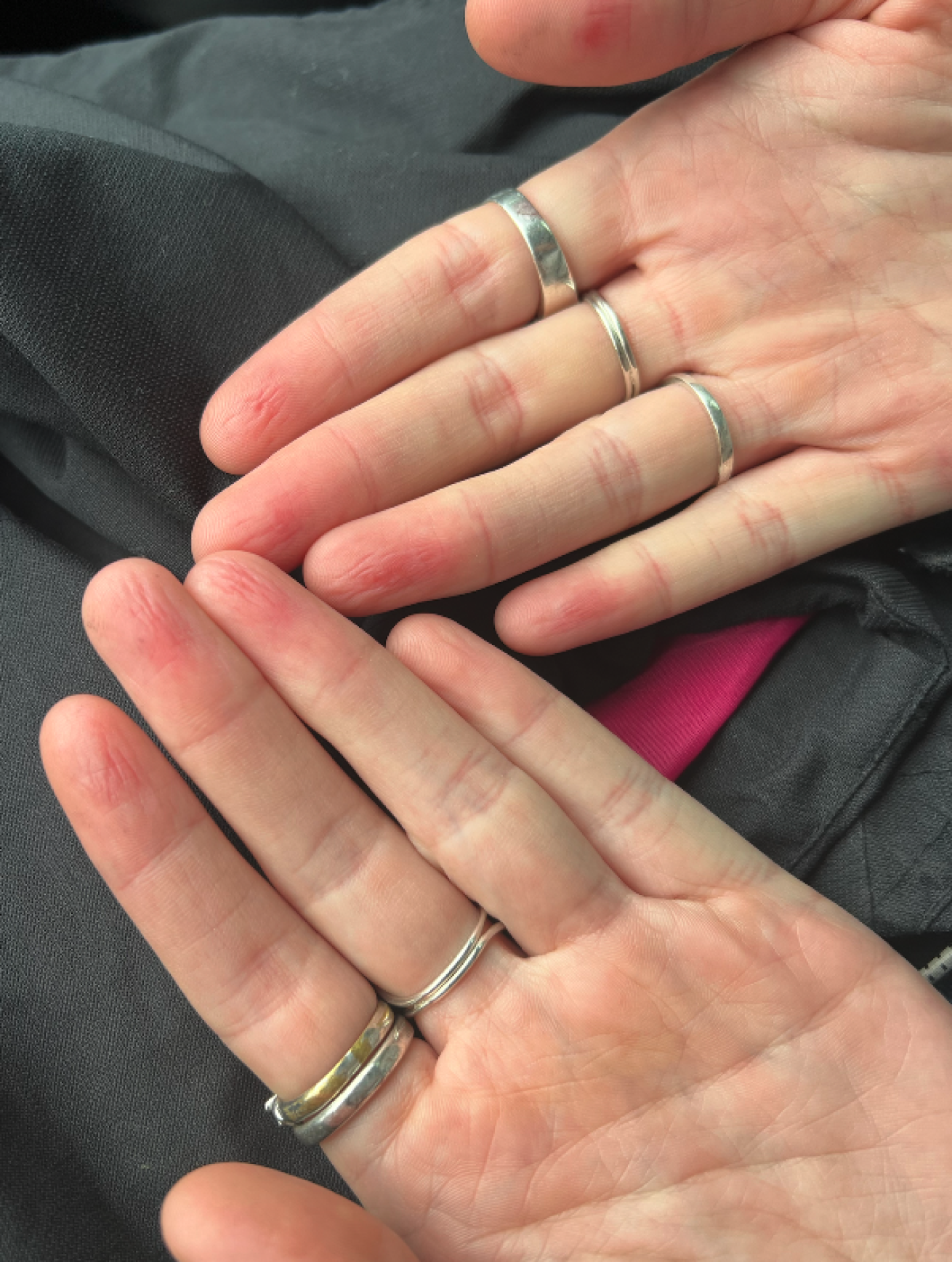
Candice LandauGinnie fingers on full display!
The first time I tried entering the Devils Spring system at Devils Ear, I failed. As I struggled to make headway in the intense current, my regulators hissed, just shy of free-flowing. It was only after Ken surfaced and explained that I needed to get as far down into the crack as possible and use my hands to really pull myself in that I managed to do it. I scraped against rocks, pulled at crevices and dug my knees into cracks, basically crawling my way into the system. It took a few minutes to clear my head of an impending sense of doom, but when I did I felt a rush of gratitude for the equipment that got me through and the instructor that watched me with a hawk’s eye.
Later when I asked Gilly how she dealt with flow, she said, “That’s why we have scooters, Candice,” as though it were the most obvious thing. Until then, I’d never understood. I have since come to learn that some cave divers love flow. I’m not sure how just yet, but perhaps one day I’ll be writing that article.
While BARE drysuits are not as commonly seen in cave country, something I suspect has more to do with the limited brands the cave diving stores stock. In the Pacific Northwest, BARE is a popular brand. Because the water is so cold year-round, the drysuit’s thermal properties make it a favorite, not to mention the tough boots that make scrambling over jagged river jetty rocks possible.
My Only Concerns: A Note to Tech Divers
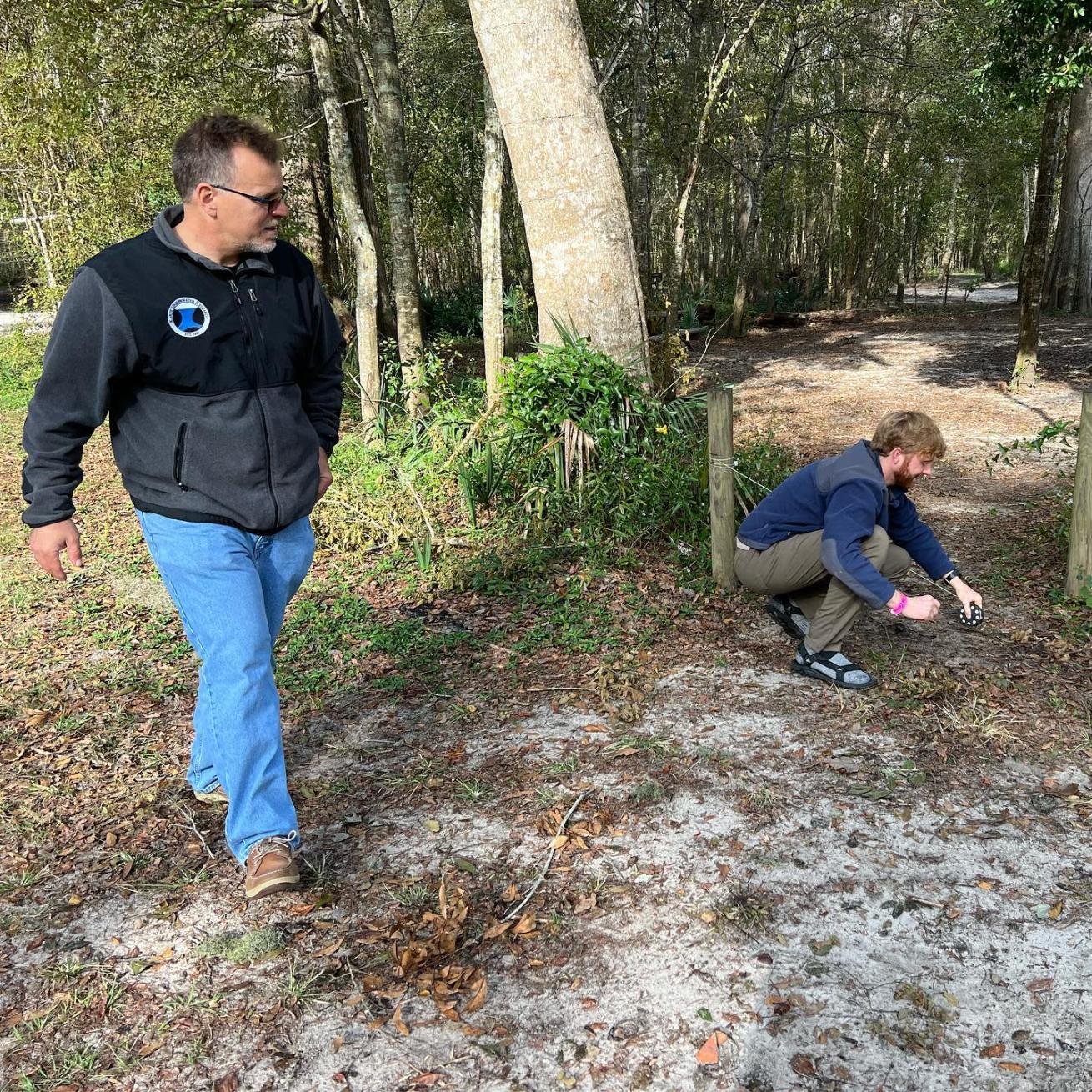
Candice LandauKeenan conducts a lost line drill with Ken Sallot supervising. Dry land drills are very important when you're learning to dive in a cave.
While much of my article has been written in praise of the drysuit, there is one small feature that concerns me, especially for cave or technical divers. This feature is the zipper’s pull tab. On the guardian tech dry, the pull tab is long and large and, unfortunately settles into place on the right hip where the diver’s corded canister light is often kept.
This would not be as big a concern if there were two zippers as on many other drysuit designs: the inner zipper keeps you dry, and the outer zipper adds that extra layer of protection and prevents the zipper pull tab from catching on things.
I say this because I actually did have the zipper catch on my canister light and partially open. While I only got a trickle of water in, had I not had backup thermals to switch into on my following dive, I would have had to dive wet and cold—not a pleasant prospect when learning a new skill.
Care should be taken when placing a canister light, or anything else for that matter in close proximity to the zipper tab.
Otherwise, I couldn’t recommend this drysuit more.

